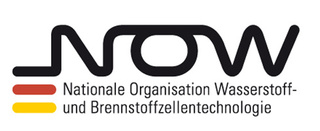

Within the last 18 month the goal was to identify and cluster issues at charging sessions to derive counter measures accordingly. Overall, this project will support the market ramp-up of electromobility by giving valuable and implementable recommendations to the industry how to decrease the likelihood of malfunctions during the charging process.
To understand the complex mechanisms during the charging process the project followed a holistic approach which took all relevant actors in the charging ecosystem (Car Manufacturers, Charging Station Manufacturers, Charge Point Operators, E-Mobility Service Providers & the Grid) into consideration. This was extremely relevant to identify open gaps and errors which particularly occur at the interfaces between the actors.
“This project will bring electromobility a big step forward by enhancing the user experience during the charging process.”
Thank you to all consortium partners NOW GmbH, University of Stuttgart, Fraunhofer Institute for Industrial Engineering IAO, ABB, Stromnetz Hamburg, BMW, EWE, EcoG, Digital Charging Solutions, and IONITY for the fruitful cooperation.
Thank you BMDV and Projektträger Jülich for funding and supporting this important project to enable a seamless charging experience.
Involved Companies, in alph. order:
CharIN project Wirkkette Laden (Customer Journey) accomplished
Wirkkette Laden describes the customer journey and all related experiences an EV-driver may make while charging his/her electric car.
Funded by the German Federal Ministry for Transport and Digital Infrastructure (BMDV) and Projektträger Jülich, the project was initiated in 2021. CharIN took the neutral lead of the project group, a consortium consisting of different stakeholders from the industry and science who collected all potential issues someone may face during the charging process. The research based on statistic data analysis from the backend of a charging station, real laboratory testing with eye tracking cameras, diary studies, semantic analysis with an A.I., and spanned over 1 ½ years where testers were using different EV brands and different charger types.
Apparently, most of the charging issues are caused by the charger being the only reference point where a fault can be allocated. However, the root cause could rely on several reasons as for example the backend, the EV itself, or an authentication error. The charging ecosystem consists of a lot of interfaces that need to communicate properly to ensure a seamless charging process. Starting with the App to find a suitable charger and ending with the payment of all parties involved.
This project has major outcomes like the Big Picture of the charging ecosystem as well as a matrix of the charging functions over the charging use cases as a basis of communication within the EV world.
Based on the findings, a paper with 12 design principles and recommendations for public charging stations was published to further improve the charging experience.
Related Downloads



















